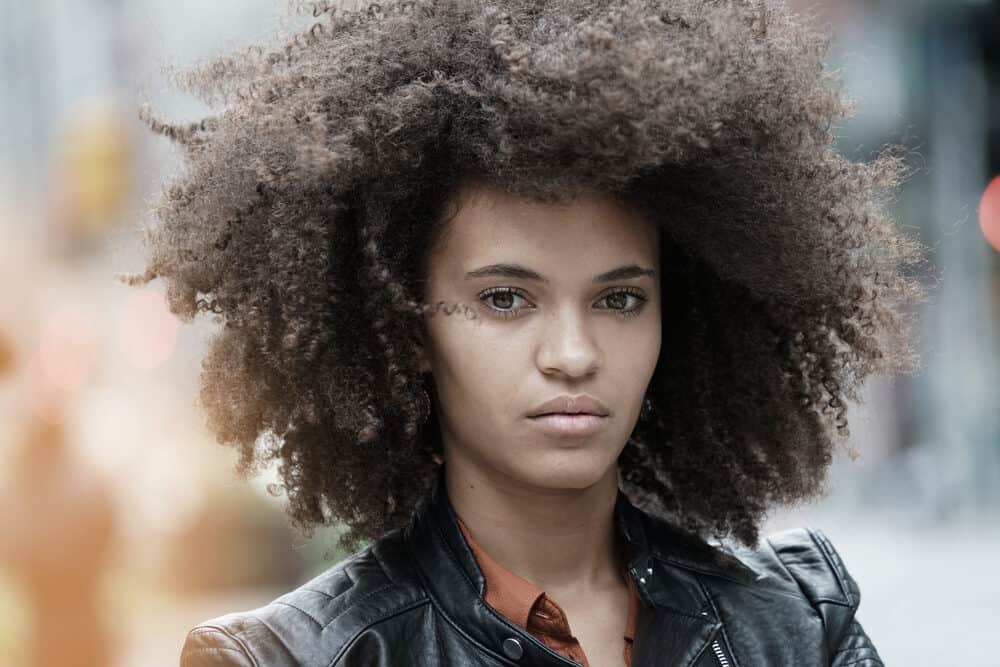
Are you looking to bleach or dye your dark hair a few shades lighter or even platinum blonde? Depending on your desired end result, it could be a long process.
There are seven stages to lightening dark hair, and you’ll need to know about all of them if you’re going to have any chance of meeting your hair color goals. In this article, we’ll fill you in on all the stages of lightening dark hair.
Table of Contents
- 1 The Color Stages of Lightening Dark Hair
- 2 Key Takeaways
- 3 Lightening Dark Hair Is a Gradual Process
- 4 How Light Does Your Hair Need to Be?
- 5 Effective Ways to Lighten Dark Hair
- 5.1 Bleach
- 5.2 Hair Dye
- 5.3 Lightening Hair with Natural Methods
- 5.4 Does Lightening Spray Work on Dark Hair?
- 5.5 What Is the Best Hair Lightening Spray?
- 5.6 Is Lightening Spray Bad for Your Hair?
- 5.7 What Is the Best At-Home Hair-Lightening Kit?
- 5.8 Does Lightening Shampoo Work on Dark Hair?
- 5.9 Does Splat Lightening Bleach Work on Dark Hair?
- 5.10 Is Lightening Cream the Same as Bleach for Hair?
- 5.11 How Many Stages of Lightening Does Dark Hair Go Through?
- 5.12 Related Articles
The Color Stages of Lightening Dark Hair
Throughout the seven stages of hair lightening, you can expect your hair to vary widely in color. You’ll see what we mean as you progress through this section, where we’ll tell you all about the stages of lightening dark hair.
Stage 1: Black or Darkest Brown Color
For most people, stage 1 will be the starting point. The good news is that you can only go lighter from here!
Stage 2: Dark Brown Color
Dark brown equates to level 4 on the color scale. You can achieve this color after one round of bleaching dark hair. This stage of lightening is achievable at home with powder bleach and a 20-volume developer. At this point, all of the dark pigments are stripped from your hair.
Stage 3: Light Brown Color
The next stage is light brown. Colors anywhere from levels 5-6 would be considered light brown. This color has more of a red/brown undertone. At this point, you might want to start using a higher volume developer (30 or 40) to achieve a lighter color result.
Stage 4: Dark Blonde Color
Dark blonde follows light brown and is considered stage 4. Color levels 6-7 would be considered dark blonde, more commonly known as “dirty blonde.” It’s hard to differentiate between dark blonde and light brown, but a key difference is that dark blonde has more of a yellow undertone.
After reaching this stage, your hair will be dry and potentially crispy. If you are not deep conditioning in between bleaching sessions, your hair might start to shed more than usual.
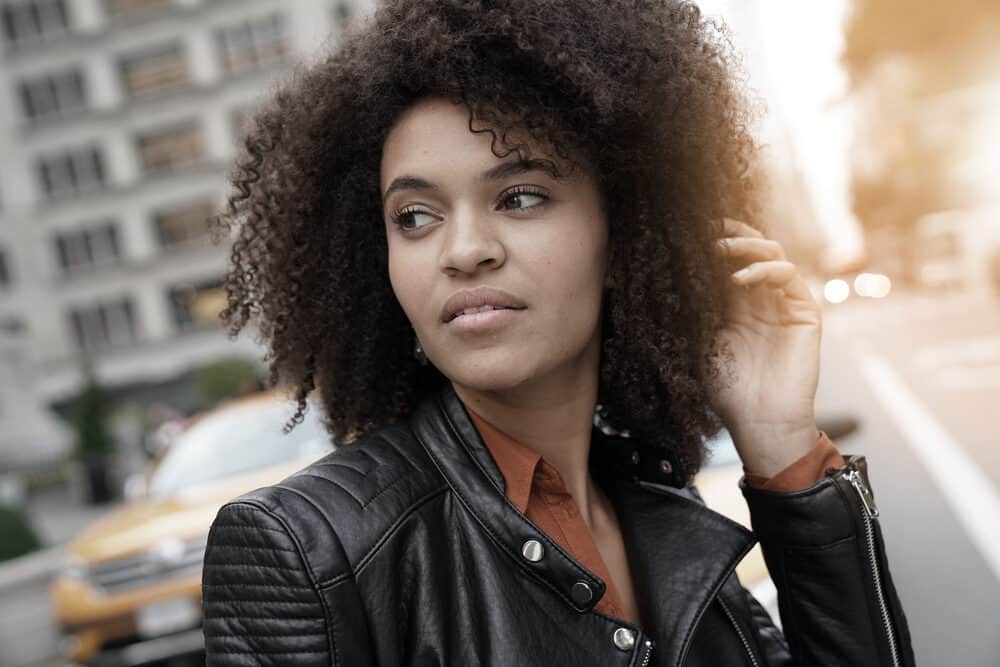
Stage 5: Medium Blonde Color
This stage is where the true blonde colors start. Medium blonde would be considered a level 8 on the color scale. Almost any shade will show on top of this color.
You can achieve this shade at home, but if you want to lighten your hair further, you should contact a professional colorist. They’ll be able to give you the color results you want while minimizing additional damage to your already fragile hair.
Stage 6: Light Blonde Color
Level 9 on the color scale would be light blonde hair, and it’s tough to achieve at home. This color is just below platinum and can be a very damaging process for your hair if done improperly.
Breakage, extreme dryness, and even hair loss are risks for your hair at this stage. We do not recommend trying to achieve this color at home, but at this stage, platinum, pastel, and virtually any other color will show up.
Stage 7: Platinum or Icy Blonde/White Color
This is the perfect stage for those trying to achieve the true Elsa look! Icy blonde is the lightest color on the color scale (level 10). Any color on Earth will show up over this color - pastels, pink, green, blue, purple - you name it.
We advise against attempting to achieve this stage at home because the damage (due to a very aggressive process) can be irreversible, especially if cheap products are used.
However, if done correctly, your hair will just be a little dry, which is reversible with a few deep conditioning treatments and/or Olaplex treatments.
Key Takeaways
- Bleaching Process: Achieving a lighter hair color from darker hair involves multiple bleaching sessions, especially for dark brown hair. The process gradually lifts brown pigments, moving through different color levels to reach the desired result.
- Hair Health Considerations: Maintain the health of your hair throughout the bleaching process by using hair masks and heat protectants. Regular trims and deep conditioning are crucial to prevent severe damage and keep your hair in good condition.
- Understanding Hair Levels: Familiarize yourself with your hair porosity and natural hair level on the color scale. These factors determine how your hair reacts to bleach, affecting how many sessions you need and the strength of the bleach mixture used (e.g., 30-volume developer).
- Choosing the Right Products: Use the right products for your hair type and color. For example, you would use purple shampoo to counteract yellow pigments and achieve a blonde look. This step is essential for hair that has reached a pale yellow stage after bleaching, ensuring a more natural look.
- Professional Guidance for Best Results: Consult a hair stylist for best practices, especially when aiming for a lighter shade. Their expertise helps in choosing the right shade and ensures the condition of your hair is preserved during the chemical process.
Lightening Dark Hair Is a Gradual Process
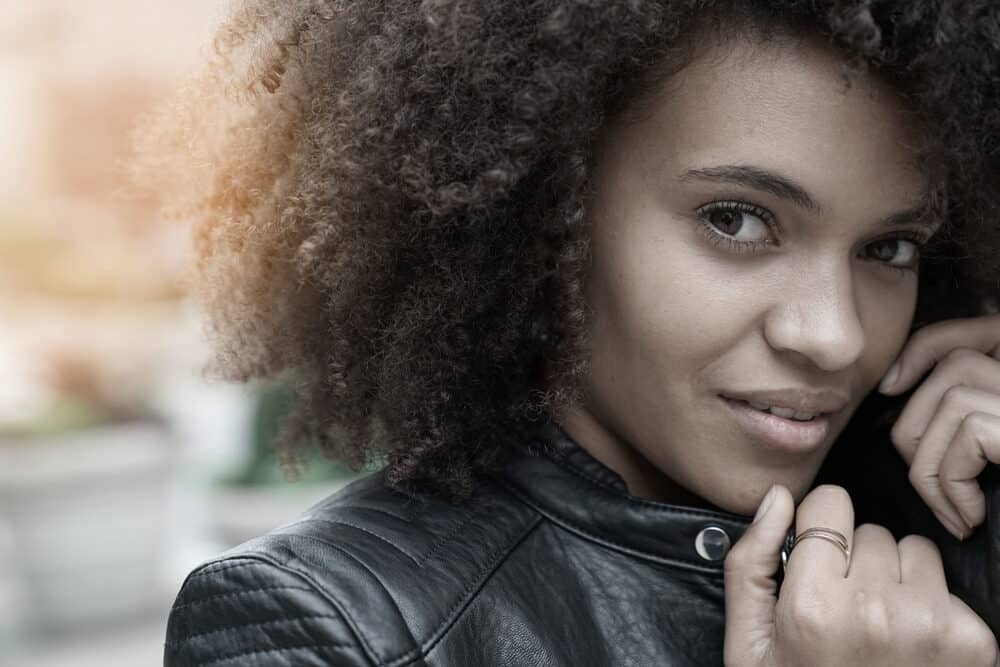
Dark hair is one of the most challenging hair colors to lighten, and we’ll tell you why. There are two types of melanin in everyone’s hair: eumelanin and pheomelanin.
The more eumelanin your hair contains, the darker it will be, and the more pheomelanin your hair has, the lighter it will be.
With that being said, dark hair has loads of eumelanin, making it naturally more difficult to lighten. It naturally gravitates toward the darker end of the color scale.
Keep this in mind when you’re trying to lighten your dark hair - it could take several bleaching sessions to achieve the level of lightening you’re going for.
How Light Does Your Hair Need to Be?
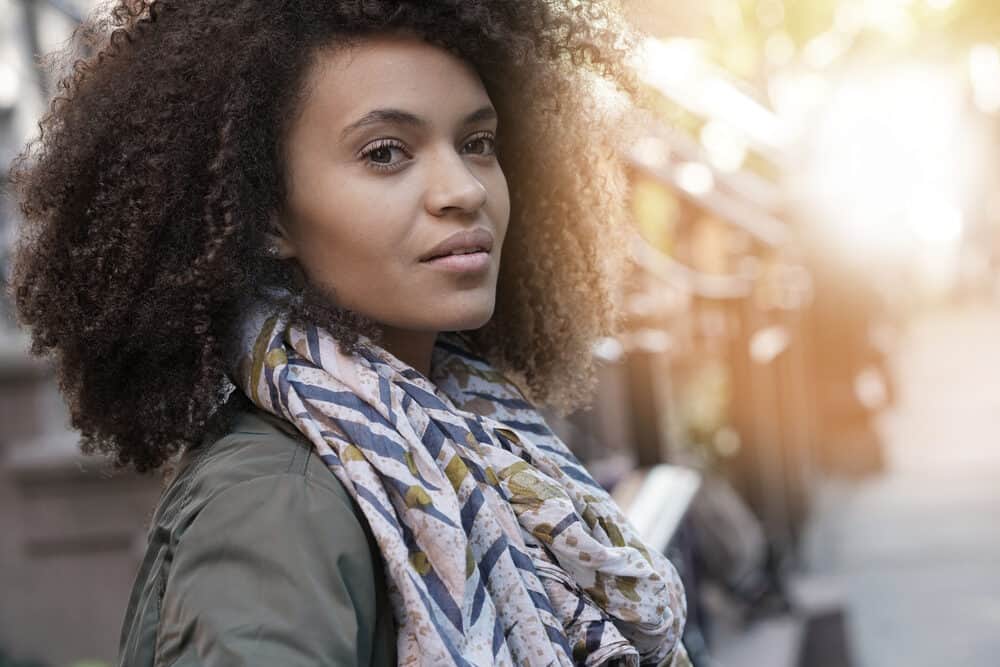
To achieve your desired color, you must know the exact stage your hair needs to be at. If you lighten your hair too much, there won’t be enough pigment for the color to latch onto. If you don’t lighten it enough, the color won’t show up.
Tips to Choose the Right Color Shade for You
You’ll usually find directions and recommendations as to what shade is best to start with in order to achieve the color on the dye. However, a general rule of thumb is to go lighter the more vibrant you want the color to be.
Typically, an 8 on the color scale is a good universal starting point. If you want your color to act as a hair tint, though, a 4 on the color scale would be ideal.
How Many Levels Can You Lighten in One Session?
Lightening sessions should be spaced at least 3 weeks apart, but 6-8 weeks is recommended, especially if you are doing this at home. You should also be doing weekly deep conditioning treatments in between sessions.
Effective Ways to Lighten Dark Hair
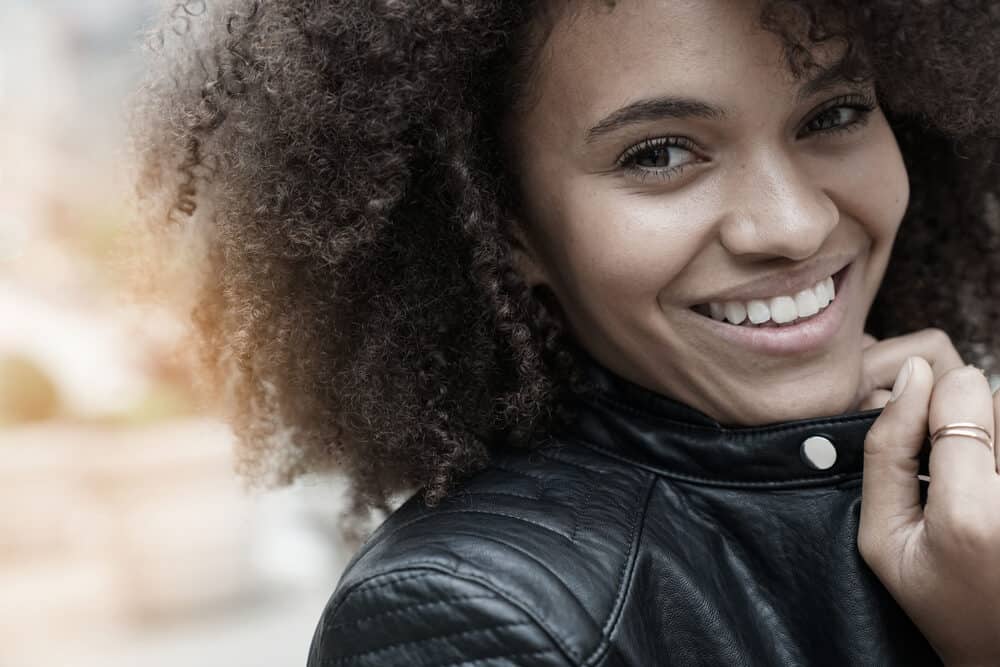
There are multiple ways to lighten your hair naturally or chemically. Some chemical ways include bleach, professional dyes, and box dye. Natural ways incorporate apple cider vinegar, baking soda, and more. We’ll take a look at several lightening methods below:
Bleach
Bleach is the most damaging way to lighten your hair. It strips your hair of all moisture and natural protectants, making it very dry and fragile. However, bleach is the most effective way to lighten your hair. To go from stage 1 to stage 6 or 7 may take only about 2 or 3 bleaching sessions.
Hair Dye
Professional dyes and box dyes can also dry out your hair, but they aren’t as damaging as bleach. Using hair dyes alone, though, isn't as effective as bleach. They lighten your hair by about 2 or 3 shades, and only on virgin hair.
Lightening Hair with Natural Methods
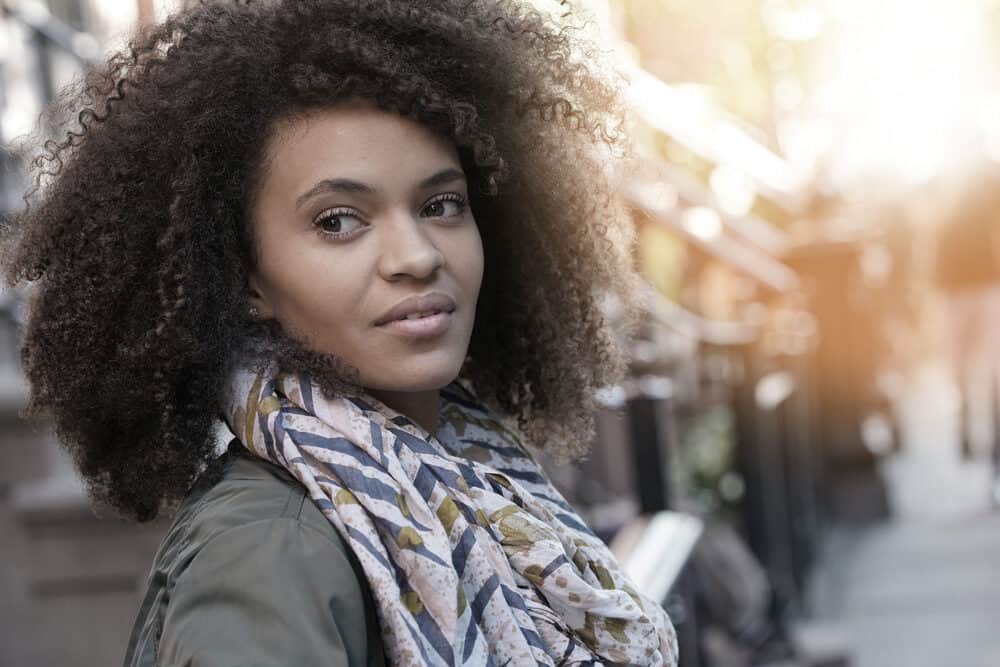
Some of the most popular natural hair lightening methods include baking soda and peroxide, and apple cider vinegar. We’ll give you a brief overview of both below:
Baking Soda and Peroxide
Baking soda and peroxide is an effective method to lighten your hair, though it won’t lighten it as much as bleach would. The baking soda acts as the bleach powder, and the peroxide is the “developer.”
Leave it on for no more than 30 minutes, and you can achieve stage 6 or 7 hair from stage 1 in about 3-5 sessions. However, just like bleach, baking soda and peroxide can be drying.
Apple Cider Vinegar
Apple cider vinegar needs to be diluted before applying to your hair, about a 1:6 ratio of apple cider vinegar to water. Leave it on your hair for 15-20 minutes, and in about 3-4 sessions, you can lighten anywhere from 3-5 stages.
Note: Natural lightening methods may be gentler than chemical-based methods. However, they aren’t as reliable as hair dye or bleach, which were specifically formulated for the purpose of altering the color of hair.
Does Lightening Spray Work on Dark Hair?
Lightening spray can work on dark hair, but the effectiveness of the product will depend on the color and texture of your hair, as well as the strength of the lightening spray. If you have very dark hair, it may take several applications to achieve the desired level of lightness, or it may not work at all.
What Is the Best Hair Lightening Spray?
There are many hair-lightening sprays on the market, and the best one for you will depend on your hair type and the level of lightness you're trying to achieve. Some popular options include Sun-In Hair Lightener, John Frieda Sheer Blonde Go Blonder Controlled Lightening Spray, and Bumble and Bumble Surf Spray.
Is Lightening Spray Bad for Your Hair?
Lightening sprays can be drying to the hair, and especially repeated use can lead to damage and breakage. It's important to follow the instructions carefully and avoid overusing the product too regularly. Additionally, it's a good idea to use a deep conditioning treatment regularly to keep your hair healthy and moisturized.
What Is the Best At-Home Hair-Lightening Kit?
The best at-home hair-lightening kit depends on your hair type, hair health, and how light you want your hair to get. Some popular options include L'Oreal Paris Feria Absolute Platinum Advanced Lightening System, Manic Panic Flash Lightning Hair Bleach Kit, and Schwarzkopf Professional BlondMe Bond Enforcing Premium Lightener. Follow the instructions carefully and avoid overprocessing to prevent damage.
Does Lightening Shampoo Work on Dark Hair?
Lightening shampoo can help to gradually lighten dark hair over time, but it really depends on the color and texture of your hair, as well as the strength of the shampoo. Be patient while waiting for results. Lightening shampoo is very drying to the hair, so use a deep conditioning treatment regularly to keep your hair healthy and moisturized.
Does Splat Lightening Bleach Work on Dark Hair?
Splat Lightening Bleach is a popular lightening product that claims to effectively lighten dark hair. However, its effectiveness depends on various factors, such as the starting color of the hair, the strength of the product, and the technique used during the lightening process. There are other lightening products that may be more effective for certain hair types and colors.
Is Lightening Cream the Same as Bleach for Hair?
Lightening cream and bleach are similar in that they both work to lighten the hair, but lightening cream is typically much gentler than bleach. It's formulated to lift the hair color gradually over time. Bleach, on the other hand, is a stronger product, so it's more damaging, but it can lift the hair color quickly and dramatically.
How Many Stages of Lightening Does Dark Hair Go Through?
There are seven gradual stages of lightening dark hair. Stage one is black or the darkest brown color. From there, you can use bleach and lighteners to reach stage two, dark brown color; stage three, light brown color; stage four, dark blonde color; stage five, medium blonde color; stage six, light blonde color; and stage seven, icy blonde/white color.
- How To Lighten Hair Without Bleach for Dark Hair
- How to Bleach Black Hair Without Damage
- What Color Can I Dye My Black Hair Without Bleaching?
- How to Dye Dark Hair Purple Without Bleach
Knowing the seven different stages of lightening dark hair takes all the guesswork out of lightening your hair. That way, you can achieve your perfect hair color the first time. Now that you have all of this valuable information, what hair color will you try?




